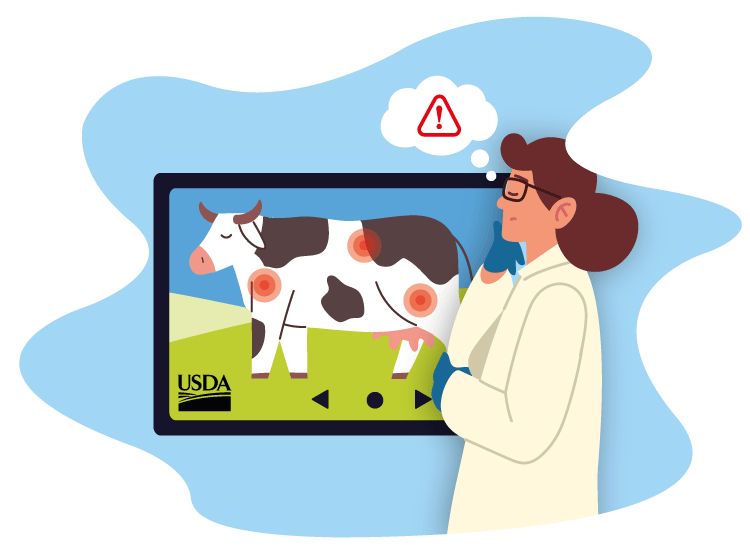The USDA has been transitioning from in-person training to virtual training since the pandemic. This shift allows employees to access training remotely, ensuring safety and flexibility. Virtual platforms enable interactive learning experiences, including webinars and online courses. This move reflects a modern approach to workforce development, reducing costs associated with travel and accommodation. Despite the challenges posed by the shift, the USDA’s commitment to providing quality training remains unwavering in this digital era.
Dr. Nicola Ritter, Instructional Associate Professor and Director of the Center for Educational Technologies (CET), was awarded a $1M, two-year grant from USDA-APHIS to develop a training program that augments their in-person foreign animal disease trainings. This virtual training program will expand access to veterinarians and animal health care providers who monitor the health of America’s food animal supply. Dr. Ritter has led the Center for Educational Technologies through previous USDA training grants. Bette Bittner, Instructional Designer at the Center for Educational Technologies, will support subject matter experts and lead the production team in developing immersive, augmented reality learning experiences for veterinarians.
“As director of the CET, I can focus on the technical components of the grant and trust that the educational components are taken care of by our award-winning, multi-talented staff. I really couldn’t fulfill specific aims of this grant without the exceptional team at the CET.” stated Dr. Ritter.

Augmented reality (AR) is rapidly transforming various industries, and the field of veterinary medicine is no exception. By incorporating AR technology into veterinarian training programs, professionals can now enhance their skills in animal disease monitoring and detection like never before.
With AR, veterinarians can immerse themselves in realistic simulations related to animal health that mimic real-life scenarios. This technology allows them to visualize and interact with 3D models of different animal species, organs, and diseases, providing a hands-on learning experience that is both engaging and effective.
One of the key benefits of using AR in veterinary training is its ability to offer personalized learning experiences. Veterinarians can practice diagnosing specific diseases and conditions on virtual animals, receiving instant feedback and guidance along the way. This iterative approach helps them improve their diagnostic skills and decision-making processes in a risk-free environment.
Furthermore, AR enables veterinarians to stay updated on the latest advancements in veterinary medicine by providing access to a wealth of information and resources right at their fingertips. They can learn about new diseases, treatment methods, and diagnostic techniques through interactive AR modules, ensuring they are well-equipped to handle any real-life situation that may arise.
In conclusion, augmented reality is revolutionizing the way veterinarians are trained in disease monitoring and detection. By incorporating AR technology into their training programs, veterinary professionals can enhance their skills, stay informed about the latest developments in the field, and ultimately better monitor the health of America’s food supply chain. This innovative approach is shaping the future of veterinary education and ensuring that veterinarians are well-prepared to address the complex challenges of animal health.
About Research at the Center for Educational Technologies: The Center for Educational Technologies is a Core Facility of Texas A&M University that supports researchers with their training and outreach activities. Research Resources ID: RRID:SCR_022691